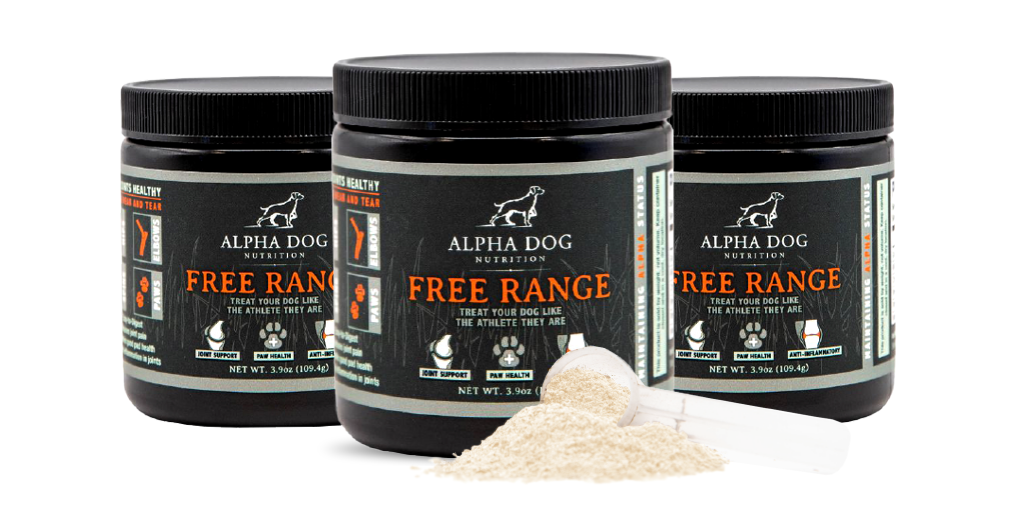Arthritis is a common condition that affects many dogs, particularly as they age.
It can lead to pain, stiffness, and decreased mobility, significantly impacting their quality of life.
Understanding the signs of arthritis in dogs—such as limping, difficulty climbing stairs, reluctance to play, or changes in behavior—can help you address the issue early on.
In this post, we will explore five effective ways to support your dog’s arthritis.
Let’s dive in!
What Are the Signs of Arthritis in Dogs?
Signs of arthritis in dogs can vary but often include:
- Limping or favoring a limb
- Stiffness, especially after resting
- Difficulty climbing stairs or jumping
- Reluctance to engage in play or exercise
- Changes in behavior, such as irritability or withdrawal
If you notice any of these signs, it’s essential to consult your veterinarian for a proper diagnosis and treatment plan.
5 Ways To Support Arthritis in Dogs
1. Dog Glucosamine Supplements
One of the most effective ways to support dogs with arthritis is through glucosamine supplements.
Glucosamine is a natural compound that helps maintain healthy cartilage and joint function, reducing pain and inflammation associated with arthritis.
Choose a high-quality glucosamine supplement specifically formulated for dogs.
Regular supplementation can significantly improve your dog’s mobility and comfort.
Out of all of the glucosamine supplements my dog has tried, Alpha Dog’s Free Range Glucosamine is his personal favorite.
Alpha Dog’s glucosamine is an exceptional choice for supporting dogs with arthritis due to its premium blend of high-quality ingredients, including glucosamine, chondroitin, MSM, and vitamin E.
This powerful joint health enhancer is designed to alleviate pain and reduce inflammation, helping dogs maintain their mobility and active lifestyles.
With real beef liver powder for flavor and added B vitamins, it’s both effective and appealing to dogs of all breeds and ages.
Simply follow the directions on the back and you’re good to go!
2. Weight Management
Maintaining a healthy weight is crucial for dogs with arthritis.
Excess weight puts additional strain on already compromised joints, exacerbating pain and stiffness.
Work with your veterinarian to create a balanced diet and exercise plan tailored to your dog’s needs.
Regular, moderate exercise is essential for maintaining a healthy weight while also keeping joints flexible.
3. Joint-Friendly Diet
A diet rich in anti-inflammatory ingredients can help support joint health in dogs with arthritis.
Foods that contain omega-3 fatty acids, such as fish oil, can be particularly beneficial.
Consider incorporating fish oil supplements or dog foods that list omega-3 sources high on the ingredient list.
Always consult your vet before making significant dietary changes.
4. Physical Therapy and Exercise
Regular, low-impact exercise can help keep your dog’s joints flexible and strengthen the muscles that support them.
Physical therapy can also provide targeted treatments to relieve pain and improve mobility.
Engage your dog in gentle activities like walking, swimming, or playing fetch in moderation.
Consult a veterinarian or a certified canine physical therapist for tailored exercises and therapy options.
5. Comfortable Living Environment
Creating a comfortable living environment can significantly impact a dog with arthritis.
Soft bedding and easy access to favorite resting spots can help minimize discomfort.
Provide orthopedic dog beds with good support, and consider ramps or steps to help your dog access furniture or vehicles.
Keeping their living space warm and free from drafts can also help alleviate stiffness.
Supporting Dog Arthritis
Supporting a dog with arthritis involves a multi-faceted approach that includes supplements, diet, exercise, and environmental adjustments.
By recognizing the signs of arthritis early and implementing these strategies, you can help improve your dog’s quality of life and ensure they remain comfortable and active.
Always consult your veterinarian for personalized recommendations to best support your furry friend.
With the right care, your dog can continue to enjoy their golden years with less pain and more joy.
Thank you for reading!

